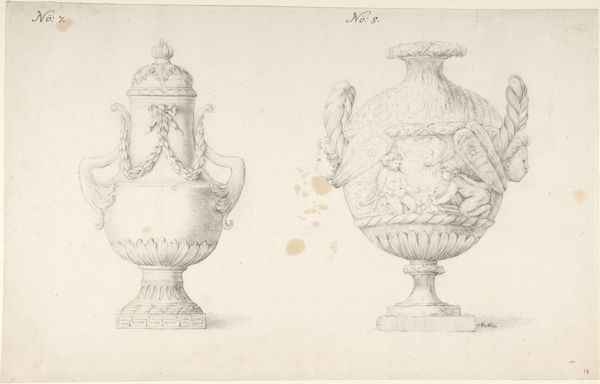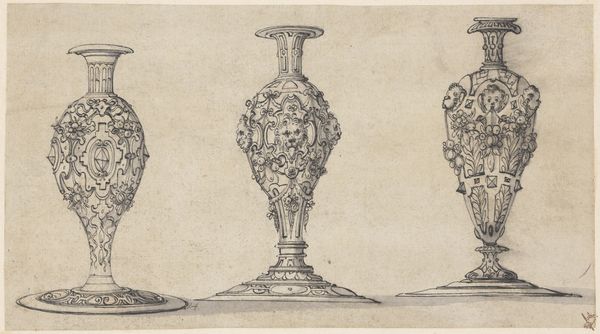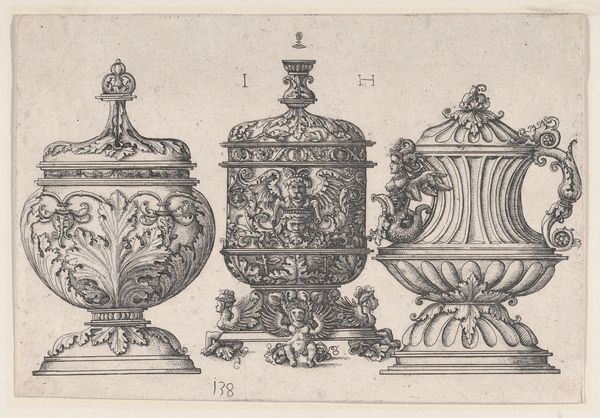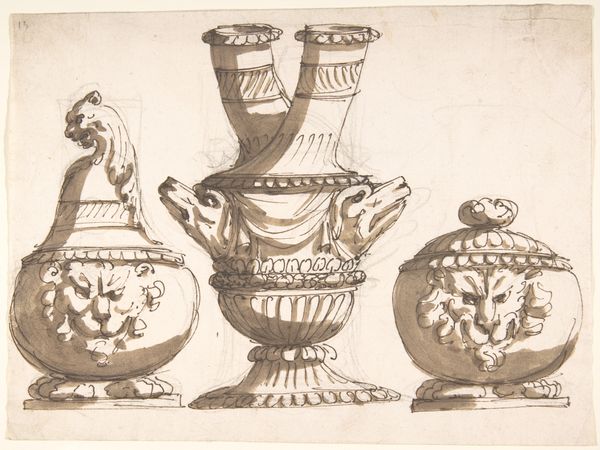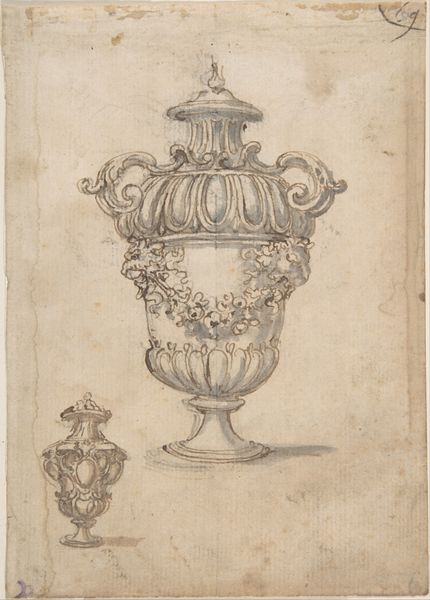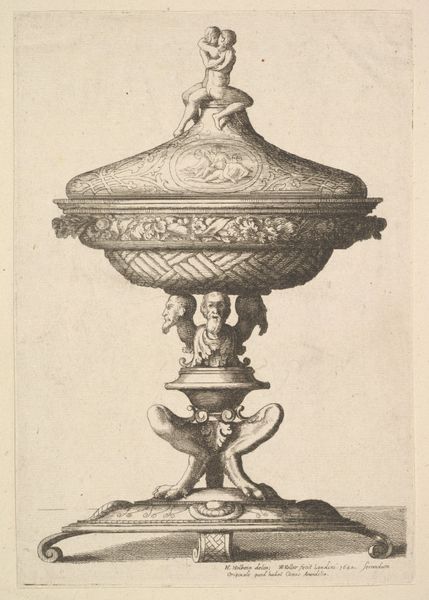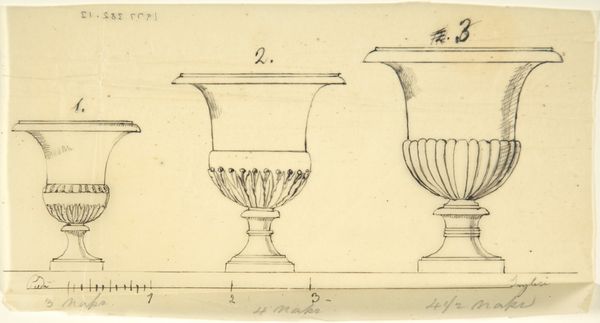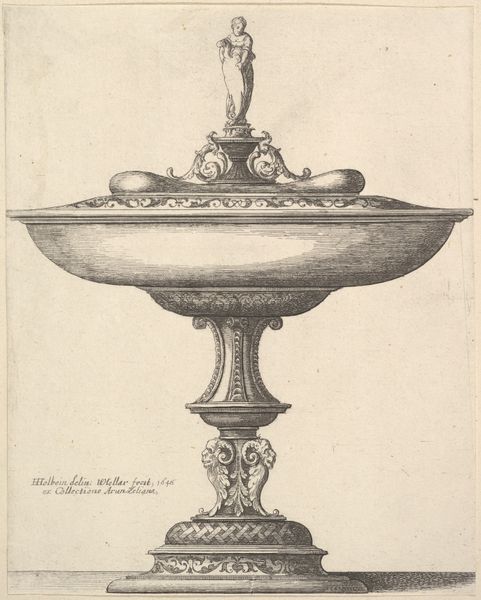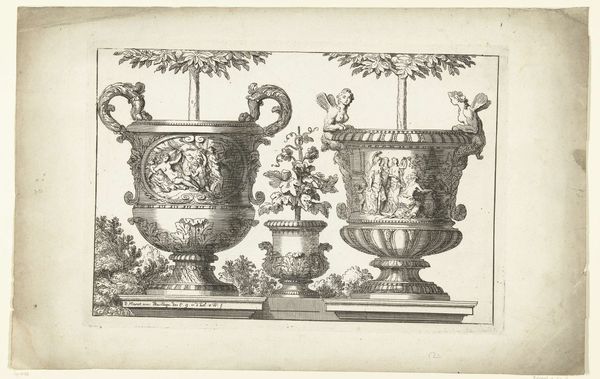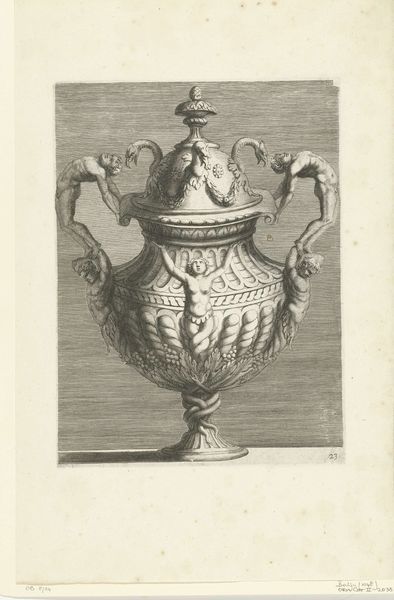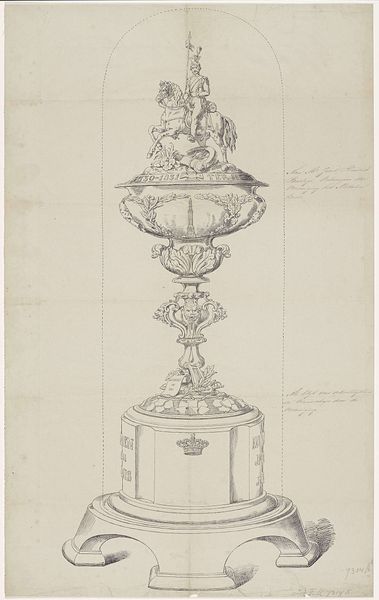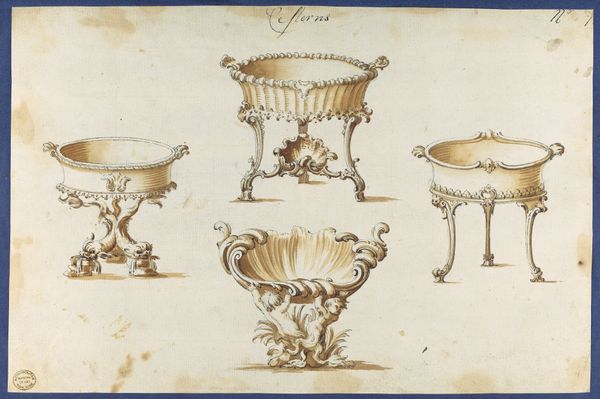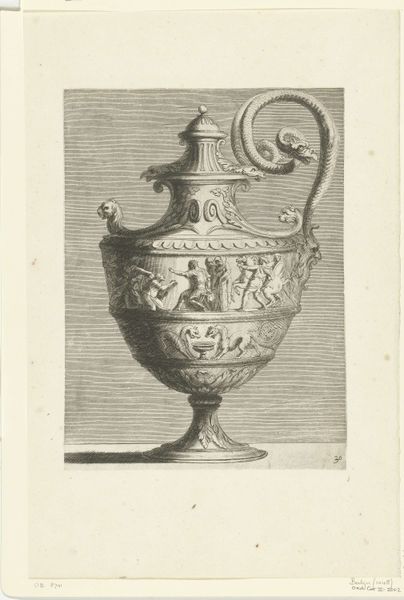
drawing, paper, ink
#
drawing
#
pen sketch
#
paper
#
11_renaissance
#
ink
#
geometric
Copyright: Rijks Museum: Open Domain
Editor: Here we have a drawing entitled "Vaas en doopvont uit de Duitse renaissance," or "Vase and baptismal font from the German Renaissance." It was created circa 1890-1922 using ink on paper. The level of detail is quite impressive. What do you see in this piece, that goes beyond a simple illustration? Curator: This drawing presents a fascinating glimpse into how historical styles are reinterpreted and repurposed across time. While the objects depicted reference the German Renaissance, the work’s creation at the turn of the 20th century raises questions about revivalism and its motivations. Editor: Revivalism? In what way? Curator: Yes, we need to consider why the artist, Johanna van de Kamer, was drawn to represent these objects. What socio-political currents might have fueled an interest in the Renaissance during this specific period? The late 19th and early 20th centuries witnessed significant cultural and nationalistic movements. How might the rediscovery and reinterpretation of historical styles tie into constructions of national identity? What does it mean to look back, and to selectively reclaim aspects of the past? Editor: So, it's not just about aesthetics, but also about how the artist might be engaging with ideas about German identity? Curator: Exactly. The act of drawing, of documenting these objects, can be seen as an act of preservation, but also interpretation. The medium of ink on paper gives it a different texture, a different context, from the original metalwork. We might also explore it as a commentary on religion, on how sacred objects become aesthetic commodities. Editor: I hadn’t considered how much context plays a role in even seemingly simple drawings like this. It gives me a new perspective! Curator: Absolutely. Art isn't created in a vacuum; it's always in conversation with the world around it. Looking at this drawing opens up those dialogues, encouraging us to question why certain styles and motifs resonate across different eras.
Comments
No comments
Be the first to comment and join the conversation on the ultimate creative platform.
